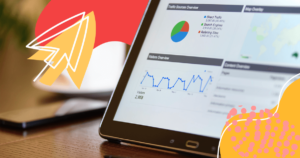Marketing techniques constantly change today, often catching you in a never-ending loop of possibilities and strategies to consider.
What once was brand new is now old, and vice versa. Yet, it’s never beneficial to discount one type of strategy until you know what it can do for your brand.
A prime example of this is direct marketing.
The main benefit of direct marketing is that you can generate a specific action or response from a select audience.
Instead of focusing efforts on educating these prospects, like you do with inbound marketing, direct marketing promotes a product or service directly to the customer.
Today, direct marketing involves both online and offline tactics and can be a beneficial part of your overall digital marketing strategy.
Want to learn more about it? Keep reading!
- What is Direct Marketing?
- Is Direct Marketing Still Effective?
- 12 Direct Marketing Examples
- How Do You Plan a Direct Marketing Strategy?
- Direct Marketing FAQ (Frequently Asked Questions)
- Wrap Up: Add Customized Direct Marketing to Your Strategy
What is Direct Marketing?
Direct marketing is a type of promotion to elicit a specific action or response from a select group of consumers.
It involves providing information on a brand, product, or service directly to a segment of consumers who are most likely to respond.
The focus here is on this end customer, persuading them to convert with the use of customized and personalized content.
You can present this content online, such as with emails or targeted ads, or go offline with telemarketing or postal mail.
Essentially, a direct marketing campaign allows your brand to build a campaign to reach a targeted audience that shows interest in what you have to offer, with the end goal of getting them to take an action such as signup or make a purchase.
Is Direct Marketing Still Effective?
When it comes to whether or not direct marketing is still effective or not, the resounding answer is yes. When designed and used strategically, it brings the following benefits.
Helps to Reach Customers
Direct marketing campaigns can reach your customers and prospects directly without them having to sort through excessive information.
It can also reach those customers faster, particularly with online tactics such as emails and SMS messaging.
Allows for Customization
Utilizing your customer data, you can customize or personalize your direct marketing messages.
Customization creates a one-on-one experience for the customer, leaving them feeling as if you created the messaging while thinking of them specifically.
Increases Sales with Existing Customers
By understanding the needs of your customers and conveying these in your direct marketing content, you can build an ongoing relationship.
In turn, this often makes them more willing to make additional purchases.
Also, by maintaining data on past purchases, you can cater your offerings and content to them in a highly efficient way, leading to an increase in sales.
Builds Customer Loyalty
Direct marketing can build customer loyalty by personalizing messages, which builds trust in your brand.
It can also create a sense of exclusivity by providing customers with discount codes, advance notice of sales or events, or some type of loyalty card or membership that they can use to access a free trial, discount, or another benefit.
Re-establishes Lapsed Customer Relationships
Direct marketing can reconnect you with previous customers who haven’t made a purchase or interacted with your brand in months or even years.
Include messages that show you have missed them and still value them as customers. Provide a special offer to invite them back and work towards re-establishing the relationship.
12 Direct Marketing Examples
There are various tactical approaches you can take when it comes to implementing direct marketing for your brand.
The ones you go with will depend on your business needs, targeted audiences, brand messaging, the goals you are trying to accomplish, and your budget.
You will also need to consider which tactics can complement or benefit your inbound marketing strategy.
Here are 12 direct marketing examples to consider.
1. Telemarketing
When strategically used, telemarketing can help you find prospects and also serve as a strategy for following up on your marketing campaigns.
2. Email marketing
Email marketing is one of the more effective direct marketing tactics your brand can use, and it’s easy to measure.
Design promotional emails or include an ad or product mention in an email you already send to a wide list, such as newsletters and business emails.
3. Text (SMS) marketing
With a high percentage of consumers utilizing mobile devices these days, it’s no wonder that text (SMS) marketing can be efficient.
Essentially, you send your promotional material directly to consumers’ mobile devices, informing them of your best deals.
SMS marketing allows for fast delivery to customers and is simple to personalize and automate.
4. Leaflet marketing using letterbox drops and handouts
Crafting attention-grabbing leaflets and distributing them via letterbox drops or as handouts remain a proven way to market your products or services.
This direct marketing tactic is simple and inexpensive, and particularly beneficial for local businesses with products that appeal to a wider audience.
5. Social media marketing
Social media provides opportunities for a dual strategy of inbound marketing and direct marketing.
For direct marketing, you can include efforts that promote a particular product, service, big sale, or discount.
You can also obtain direct feedback concerning your offerings with comments, shares, and likes.
6. Direct selling
Direct selling involves the use of postcards, catalogs, and envelope mailers, which in some way promote your brand, product, or service.
These are mailed directly to customers and potential customers.
7. Online adverts
Online advertising today provides you with distinct ways to promote your products or services on Google or the various social media platforms.
For example, with Facebook Ads, you can target a specific segment of the population. Google Ads is another option.
8. Flyers
Flyers may seem old-fashioned, but they can still play an effective role in marketing strategies.
The business flyer is designed to bring awareness to your business, a promotion, event, product, or service.
9. Promotional letters
Promotional letters, when well-written, not only inform your reader of a sale on your product or service but also create a desire for that product or service.
By including the benefits the reader will receive by purchasing what you offer and building a sense of urgency, a promotional letter can lead to higher sales.
10. Newspapers and magazine adverts
Print advertising hasn’t gone away and is still widely used, especially to reach certain audiences.
This advertising can be in the form of a newspaper or magazine advert or as an insert for these publications, such as a flyer or brochure.
11. Outdoor advertising
Outdoor advertising brings with it a high level of visibility and is meant to grab people’s attention.
Common types of outdoor advertising include billboards, banners, transit placements, and POS displays. You can also use guerilla marketing tactics to capture attention.
12. Catalog distribution
Catalog distribution provides customers with a variety of products to consider and can influence purchase decisions. It can also play a highly vital role in omnichannel campaigns.
Your catalog, or your presence in someone else’s catalog, will benefit from high-quality photos, graphics, and storytelling elements.
How Do You Plan a Direct Marketing Strategy?
Planning a direct marketing strategy doesn’t have to be overly complicated. However, there are essential steps you will need to take in order to get it right.
These steps include determining your targeted audience, tailoring your content, finding ways to measure your strategy, writing good CTAs, and creating a budget.
#1. Determine Your Targeted Audience
The success of a direct marketing strategy depends on your ability to target the right audience. For this reason, your first action is to determine who your targeted audience is.
You may need to use segmentation to narrow your list for higher success rates, such as separating out a list of those who often visit your website.
It also helps to create a buyer persona to help guide you through the creation of content.
Once you identify your targeted audience, you can narrow down the type of direct marketing tactics that will work best, whether online or offline.
#2. Tailor Your Content
Your defined audience may be prospects or previous customers. Knowing who your targets are will allow you to better tailor your direct marketing content.
Essential tips to help with this include:
- Use customization to reach your customers on a more personal level.
- Include visual content, to draw the eye and hold interest longer.
- Be straightforward, focusing on the promotional characteristic of your content and what you want the customer to do (take action!)
- Emphasize benefits over features, letting the customer know what they will get out of your product, service, sale, or event.
#3. Find Ways to Measure Your Strategy
Find ways to keep track of the actions your customers take, making their responses measurable.
Your call-to-action can serve as the measurable element, tracking how many people click on a link, call a phone number, fill in a form, or make a purchase.
By making your strategy measurable, you can analyze results and adjust your approach or identify what is or isn’t working to help with future campaigns.
#4. Focus on CTAs
A key element of any direct marketing tactic is the included Call-to-Action (CTA).
Since the goal of your direct marketing strategy is to evoke emotion and persuade the reader to take action, your CTA needs to be strong and convey a sense of urgency.
Write different CTAs for existing customers and prospects.
#5. Establish a Budget
Establish a budget separate from your inbound marketing strategy. This way, you can effectively monitor your ROI for direct marketing efforts.
Direct marketing strategies are usually cost-effective and require smaller budgets.
Direct Marketing FAQ (Frequently Asked Questions)
What is an example of direct marketing?
An example of direct marketing is email marketing, where businesses send promotional messages directly to a targeted list of potential customers.
What is direct and indirect marketing?
Direct marketing involves reaching out to potential customers directly through channels like email, telemarketing, or direct mail. Indirect marketing, on the other hand, promotes products or services through intermediaries, such as social media, content marketing, or public relations, to create awareness and attract customers indirectly.
What is the aim of direct marketing?
Direct marketing aims to generate immediate responses or actions from potential customers, such as making a purchase, signing up for a newsletter, or requesting additional information.
What are the three main types of direct marketing systems?
The three main types of direct marketing systems are telemarketing, direct mail, and direct-response advertising, which includes infomercials and online ads that prompt immediate responses.
Wrap Up: Add Customized Direct Marketing to Your Strategy
Direct marketing is far from disappearing and continues to offer opportunities for success.
Customized direct marketing techniques can benefit your customers, prospects, and your brand’s bottom line, leading to higher sales and increased customer loyalty.
At the heart of direct marketing is the ability to create engaging content, allowing you to connect with your targeted audience on a deeper level and persuade them to take action.
That’s where WriterAccess comes into play. Our content creation marketplace can help you streamline your content production, combining the efficiency of AI-powered tools with the creativity of human writers.
Why not give WriterAccess a try today? Sign up now and get 14 days of free access to our network of expert writers. Discover for yourself what great content can do for your business!










